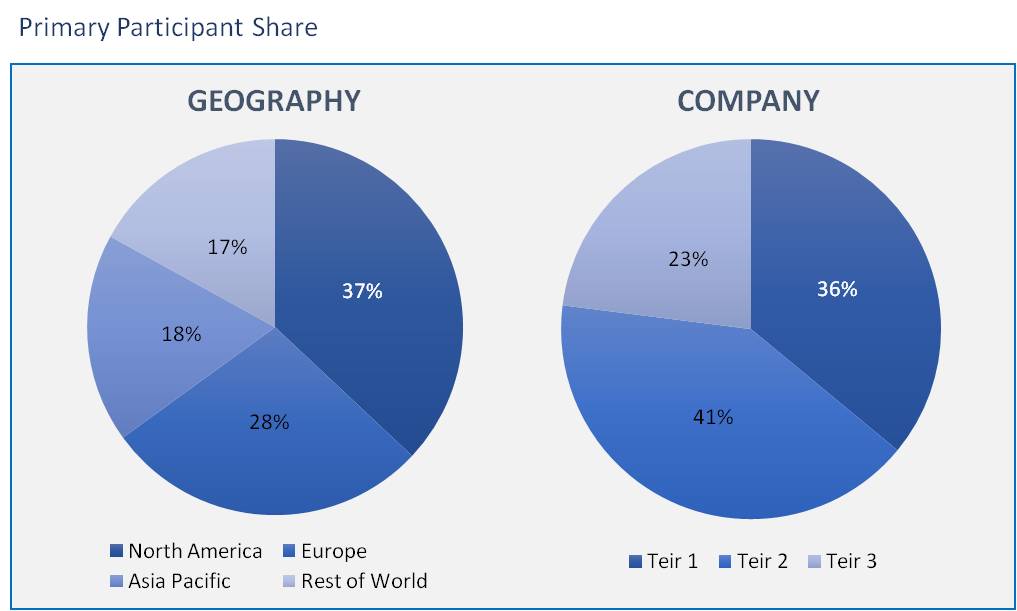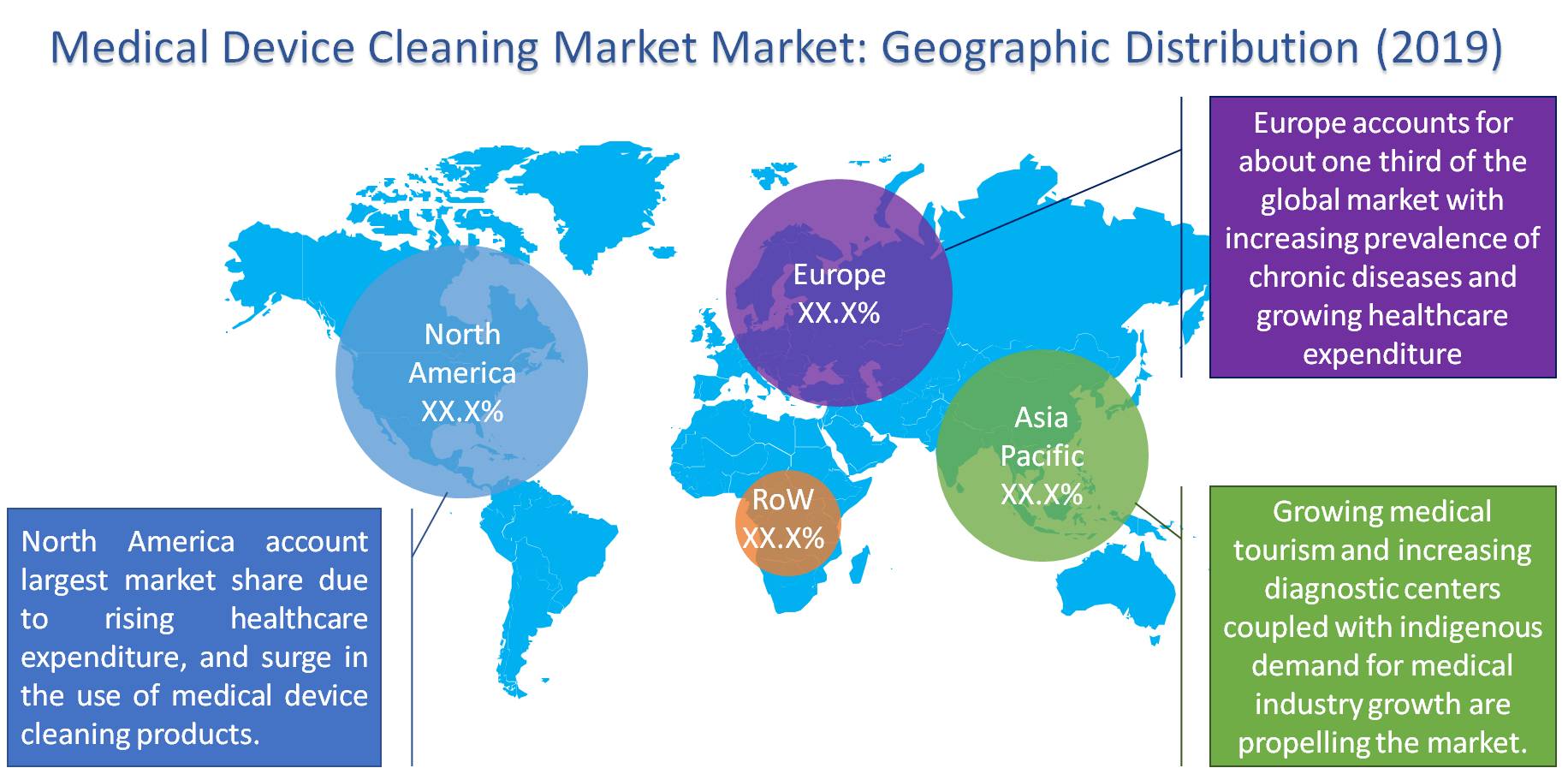
Medical Device Cleaning Market By: Process (Manual cleaning, Automatic cleaning, Disinfection and Presoaking/Precleaning), Application (Surgical Instruments, Ultra Sound Probes, Endoscopes Dental Instrument and Others), End Users (Hospitals, Clinics, Diagnostic Centers and Others), Geography (North America, Europe, APAC, and RoW) – Forecast up to 2026
- July, 2020
- Domain: Healthcare - Medical Devices
- Get Free 10% Customization in this Report
Hospitals use a lot of medical devices in the process of treatment and testing of the patients. These medical devices should be cleaned and disinfected on regular basis which needs the disinfectants and detergents. Even if the devices are reusable or implantable or disposable the devices need to be cleaned. The spread of infections which are acquired by the hospital is the risk for patients in the hospital which gives preference to the cleaning in the healthcare centers. The best example of hospital-acquired infection is the present COVID-19 Pandemic where there is a high risk of getting infected in the hospitals more than outside surroundings, so the cleaning and sanitizing of the medical devices is important which increase the demand for medical devices cleaning products. The global Medical Device Cleaning market is expected to reach more than USD 2.88 billion by 2026 and the market is growing at a CAGR of ~7.0% during the forecast period.
Research Methodology:

The Medical Device Cleaning is expanding enormously in the healthcare sector. The reusable devices are the major aspect of this market where cleaning and sterilization of devices is done through various methods and procedures in the different regions.
In the application segment the medical device cleaning market is segmented by:
- Surgical Instruments
- Dental Instruments
- Ultrasound Probes
- Endoscopes
- Others
In which surgical instruments cleaning has the major role and accounted largest share in the market. due to increasing chronic diseases, growing generic population, and growing number surgeries across world. The other key area where this device cleaning is applied is in the endoscopic procedures which is also a playing a dominant role in this market growth rate. Endoscope is the procedure where the instrument is inserted in the body where the safety is maintained in the process of hygiene of the instrument.
Segmentation of market covered based on process in the study are:
- Manual Cleaning
- Automatic Cleaning
- Disinfection
- Presoaking/Precleaning
Manual cleaning is one process which is done for cleaning the medical devices where detergents and brushes are used to remove the dirt and some specialized tools are preferred in the cleaning. The device is sterilized in the high temperature and disinfected with some fluids.
The other process which is used for the cleaning of medical devices is automatic cleaning in which the automated machines are utilized such as ultrasonic otherwise called as mechanic washers. The automatic process is adopted for the ensured cleaning of the medical devices and appliances; gas like ethylene oxide is used for the sterilization. This process of automatic cleaning is the assured and fastest cleaning which is opted by many healthcare centers which are fueling the demand medical device cleaning products.
Presoaking/Precleaning is critical process in medical devices cleaning. Globally, this process is applied to fulfill the healthcare industry compliance and governance need to secure the patients from infections.
Segmentation of the market based on the End users:
- Hospitals and Clinics
- Diagnostic centers
- Dental Clinics
Hospitals and clinics are the areas where the hygiene takes a prominent role. Therefore, it is observed that hospital and clinics accounted major share the market because most of the medical devices are reusable which needs the regular cleaning.

Taken into the regional segmentation the North America is dominating the medical device cleaning market in the recent years. Healthcare expenditure has increased in the US compared to other countries, increase in the elderly population, adoption of the advanced technology and the key players present in this region drive the demand. Asia-Pacific region is also projected to increase the growth in the market in the forecast period, due increasing population as well as increasing need of improved healthcare services in the Asia-Pacific region
Globally the market is enhancing its growth in the healthcare sector. The factors which are driving this market are increase in the surgical procedures need cleaning of the surgical instruments, increasing infections in the hospitals, awareness on the cleaning and safety, increase in the chronic diseases in old people. However, the safety concerns of the reprocessed devices and emergence of one time use medical devices hinders the demand for medical devices cleaning products.
The key players in this market are 3M, Getinge AB, MMM Group, Belimed AG, Matachana, Sotera Health, Cardinal Health, Advanced Sterilization, Cantel Medical Steris Corporation, Tristel Solutions Ltd, Sirmaxo Chemicals Pvt. Ltd, Metrex Research, LLC Pharmax Limited, and Ecolab Inc.
Globally, the Medical Device Cleaning market is increasing during the forecast period. Due to the increasing use of advanced technologies for cleaning and sterilizing, the early adoption of the new technology in the developed regions will have positive impact in the coming future.
- The competitive analysis of the major players enables users to understand the dynamic strategies such as product innovation, partnerships, merger & acquisitions and joint ventures of the key players
- This report also provides the SWOT analysis, portfolio analysis, capability analysis of the leading players
- The report will also help the research organizations and CROs of Medical Device Cleaning products to support their discovery and development activities
- Quantitative analysis of the market enables users to understand the actual facts of the market across four major regions
1. Executive Summary
2. Industry Outlook
2.1. Industry Overview
2.2. Industry Trends
3. Market Snapshot
3.1. Market Definition
3.2. Market Outlook
3.3. PEST Analysis
3.4. Porter Five Forces
3.5. Related Markets
4. Market characteristics
4.1. Market Evolution
4.2. Market Trends and Impact
4.3. Advantages/Disadvantages of Market
4.4. Regulatory Framework
4.5. Market Offerings
4.6. Market Segmentation
4.7. Market Dynamics
4.7.1. Drivers
4.7.2. Restraints
4.7.3. Opportunities
4.8. DRO - Impact Analysis
5. Process: Market Size & Analysis
5.1. Overview
5.2. Disinfection
5.3. Automatic Cleaning
5.4. Manual Cleaning
5.5. Presoak/Precleaning
6. Application: Market Size & Analysis
6.1. Overview
6.2. Surgical Instruments
6.3. Endoscopes
6.4. Ultrasound Probes
6.5. Dental Instruments
6.6. Other
7. End-user: Market Size & Analysis
7.1. Overview
7.2. Hospitals and Clinics
7.3. Diagnostic Centers
7.4. Dental Clinics and Hospitals
7.5. Other
8. Geography: Market Size & Analysis
8.1. Overview
8.2. North America
8.3. Europe
8.4. Asia Pacific
8.5. Rest of the World
9. Competitive Landscape
9.1. Competitor Comparison Analysis
9.2. Market Developments
9.3. Mergers and Acquisitions, Legal, Awards, Partnerships
9.4. Product Launches and execution
10. Vendor Profiles
10.1. Hartmann Group
10.1.1. Overview
10.1.2. Product Offerings
10.1.3. Geographic Revenue
10.1.4. Business Units
10.1.5. Developments
10.1.6. SWOT Analysis
10.1.7. Business Strategy
10.2. Integra Lifesciences Holdings Corporation
10.2.1. Overview
10.2.2. Product Offerings
10.2.3. Geographic Revenue
10.2.4. Business Units
10.2.5. Developments
10.2.6. SWOT Analysis
10.2.7. Business Strategy
10.3. Sklar Surgical Instruments
10.3.1. Overview
10.3.2. Product Offerings
10.3.3. Geographic Revenue
10.3.4. Business Units
10.3.5. Developments
10.3.6. SWOT Analysis
10.3.7. Business Strategy
10.4. Biotrol
10.4.1. Overview
10.4.2. Product Offerings
10.4.3. Geographic Revenue
10.4.4. Business Units
10.4.5. Developments
10.4.6. SWOT Analysis
10.4.7. Business Strategy
10.5. Pharmax LTD
10.5.1. Overview
10.5.2. Product Offerings
10.5.3. Geographic Revenue
10.5.4. Business Units
10.5.5. Developments
10.5.6. SWOT Analysis
10.5.7. Business Strategy
10.6. Stryker Corporation
10.6.1. Overview
10.6.2. Product Offerings
10.6.3. Geographic Revenue
10.6.4. Business Units
10.6.5. Developments
10.6.6. SWOT Analysis
10.6.7. Business Strategy
10.7. Medline Industries, Inc
10.7.1. Overview
10.7.2. Product Offerings
10.7.3. Geographic Revenue
10.7.4. Business Units
10.7.5. Developments
10.7.6. SWOT Analysis
10.7.7. Business Strategy
10.8. Medalkan
10.8.1. Overview
10.8.2. Product Offerings
10.8.3. Geographic Revenue
10.8.4. Business Units
10.8.5. Developments
10.8.6. SWOT Analysis
10.8.7. Business Strategy
10.9. Steris PLC
10.9.1. Overview
10.9.2. Product Offerings
10.9.3. Geographic Revenue
10.9.4. Business Units
10.9.5. Developments
10.9.6. SWOT Analysis
10.9.7. Business Strategy
10.10. Getinge Group
10.10.1. Overview
10.10.2. Product Offerings
10.10.3. Geographic Revenue
10.10.4. Business Units
10.10.5. Developments
10.10.6. SWOT Analysis
10.10.7. Business Strategy
11. Companies to Watch
11.1. Cantel Medical Corporation
11.1.1. Overview
11.1.2. Market
11.1.3. Business Strategy
11.2. Ecolab Inc.
11.2.1. Overview
11.2.2. Market
11.2.3. Business Strategy
11.3. 3M Company
11.3.1. Overview
11.3.2. Market
11.3.3. Business Strategy
11.4. Advanced Sterilization Products
11.4.1. Overview
11.4.2. Market
11.4.3. Business Strategy
11.5. Ruhof Corporation
11.5.1. Overview
11.5.2. Market
11.5.3. Business Strategy
11.6. Metrex Research, LLC
11.6.1. Overview
11.6.2. Market
11.6.3. Business Strategy
12. Analyst Opinion
13. Annexure
13.1. Report Scope
13.2. Market Definitions
13.3. Research Methodology
13.3.1. Data Collation and In-house Estimation
13.3.2. Market Triangulation
13.3.3. Forecasting
13.4. Report Assumptions
13.5. Declarations
13.6. Stakeholders
13.7. Abbreviations
Research Framework
Infoholic research works on a holistic 360° approach in order to deliver high quality, validated and reliable information in our market reports. The Market estimation and forecasting involves following steps:
- Data Collation (Primary & Secondary)
- In-house Estimation (Based on proprietary data bases and Models)
- Market Triangulation
- Forecasting

Market related information is congregated from both primary and secondary sources.
Primary sources
involved participants from all global stakeholders such as Solution providers, service providers, Industry associations, thought leaders etc. across levels such as CXOs, VPs and managers. Plus, our in-house industry experts having decades of industry experience contribute their consulting and advisory services.
Secondary sources
include public sources such as regulatory frameworks, government IT spending, government demographic indicators, industry association statistics, and company publications along with paid sources such as Factiva, OneSource, Bloomberg among others.
